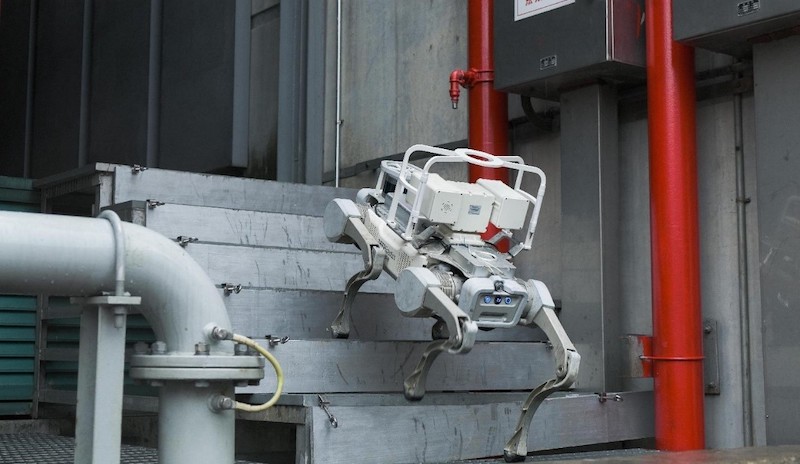Deep Robotics claims ‘breakthrough’ in autonomous search using quadrupedal robots
Deep Robotics, which specializes in the development and industrial application of quadrupedal robots, has launched a range of five Jueying X20 robots.
The company says the robots successfully completed a series of autonomous collaborative searches in a trial using eight different scenarios across an unknown environment of 3,000 square meters.
The success of the four-legged X20 robots in the trial reveals the potential for their deployment in search and inspection capacities.
The robots, developed by Deep Robotics, look remarkably similar to dogs, which are often trained and used for inspection and search purposes. The robots have the capability to provide help in rough terrain in the aftermath of earthquakes.
Wei Tang, head of algorithm engineering at Deep Robotics, says: “Teams working on emergency searches or for site exploration commonly face challenges such as insufficient site data and risks to their personal safety. That’s where these robots can provide valuable assistance.

“The robots share the simplest and most useful information, which can reduce bandwidth communication costs while improving functionality, leading to better outcomes.”
In simulated emergency searches, the robots were tasked to retrieve inflammable and explosive items, as well as rescue injured people.
To do this, the five X20 robots were each fitted with a high-resolution panoramic camera, along with a LiDAR and Mesh network. They then coordinated with each other to cover different search areas and complete the tasks.
Using laser technology for a synchronous mapping and positioning algorithm, the location environment is mapped. This allows for each robot to be independently allocated different exploration areas and targets in real-time through a collaborative mechanism.
The robots can then complete the cluster search of a large range of unknown areas with autonomous navigation and routing.
Wei Tang adds: “The success of this trial paves the way for the future adoption of quadrupedal robots in difficult and high-risk environments, supporting or replacing humans in doing life-threatening tasks, while increasing the speed and accuracy during emergency rescue operations.”
The breakthrough trial was made possible by Deep Robotics’ advanced algorithm for autonomous coordinated multi-robot exploration.
The highly efficient data traffic flow and movement between the five X20 robots means they can navigate in very dynamic environments and are able to choose autonomously the most efficient path while calculating alternatives routes.
Details of the trial and the research findings have been published by the Institute of Electrical and Electronics Engineers.
The X20 is the latest edition in the Deep Robotics Jueying series, which was designed and has been successfully deployed for industrial use since its launch in 2021.
The tasks it undertakes include power inspections, emergency rescues, public safety inspections, tunnel, mining and industrial site inspections, and construction site exploration.
The very first quadrupedal robot was designed to do fully automated site inspections at electrical substations in China, so Deep Robotics started out with a focus on driving the automation of high risk yet repetitive manual tasks, especially in extreme weathers, hazardous environments, and disaster conditions.
Last year, Deep Robotics completed its Series B funding, led by F&G Venture with participation by Xihu Venture Capital. Existing shareholder Cybernaut also built on its original investment.
The company’s clients and partners include Eastern Green Power, SUPCON,Lenovo, Takenaka Corporation, Baosteel, University College London and the University of Edinburgh.

